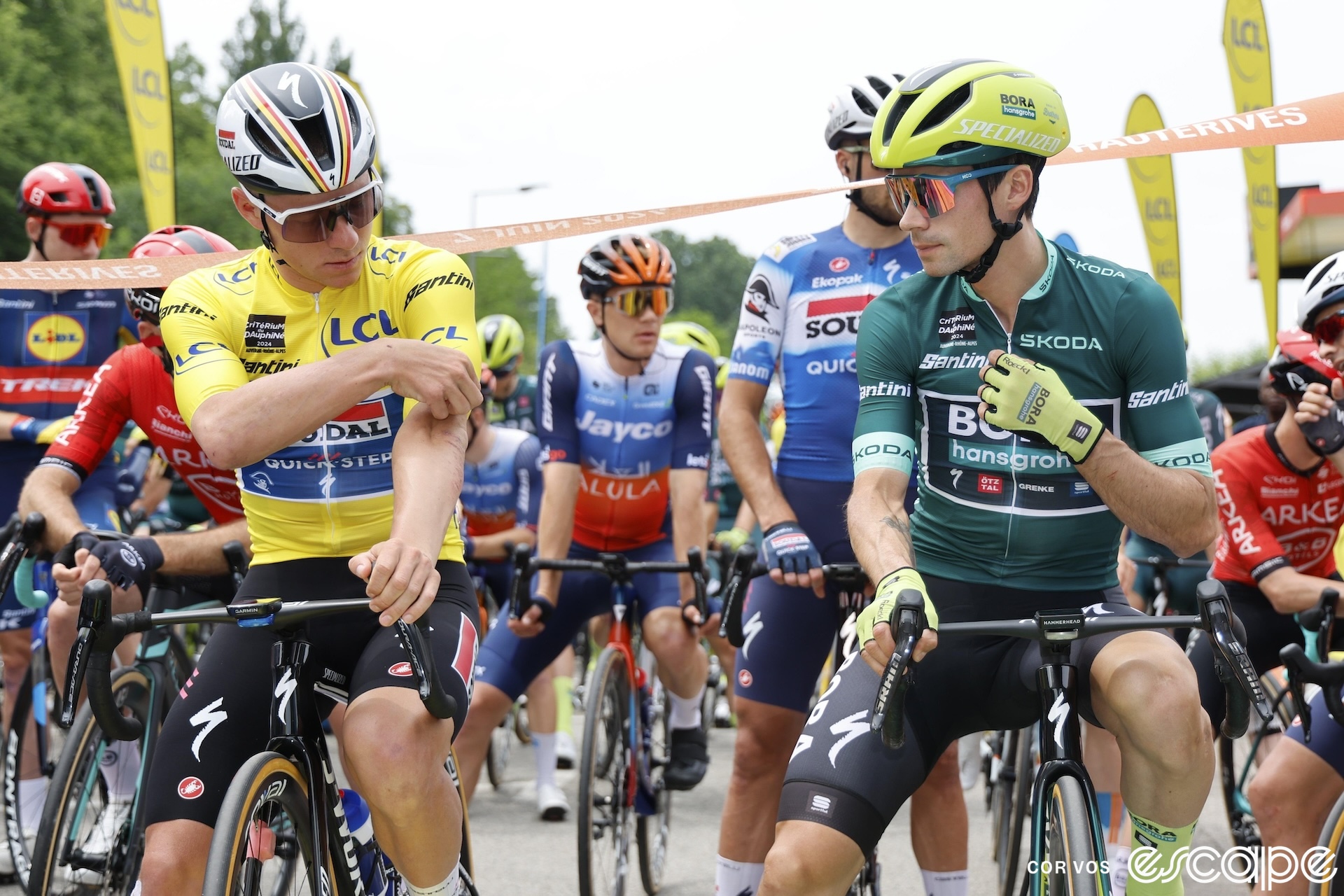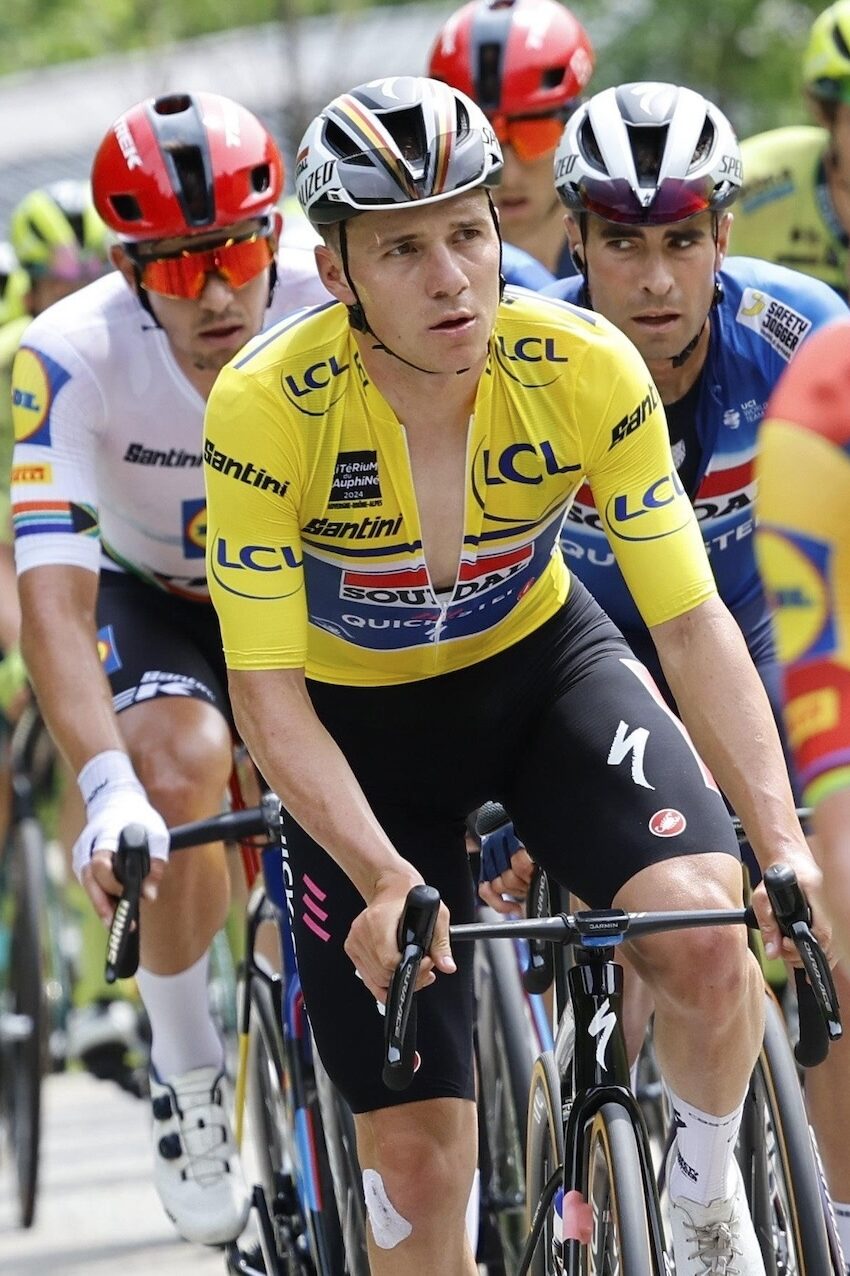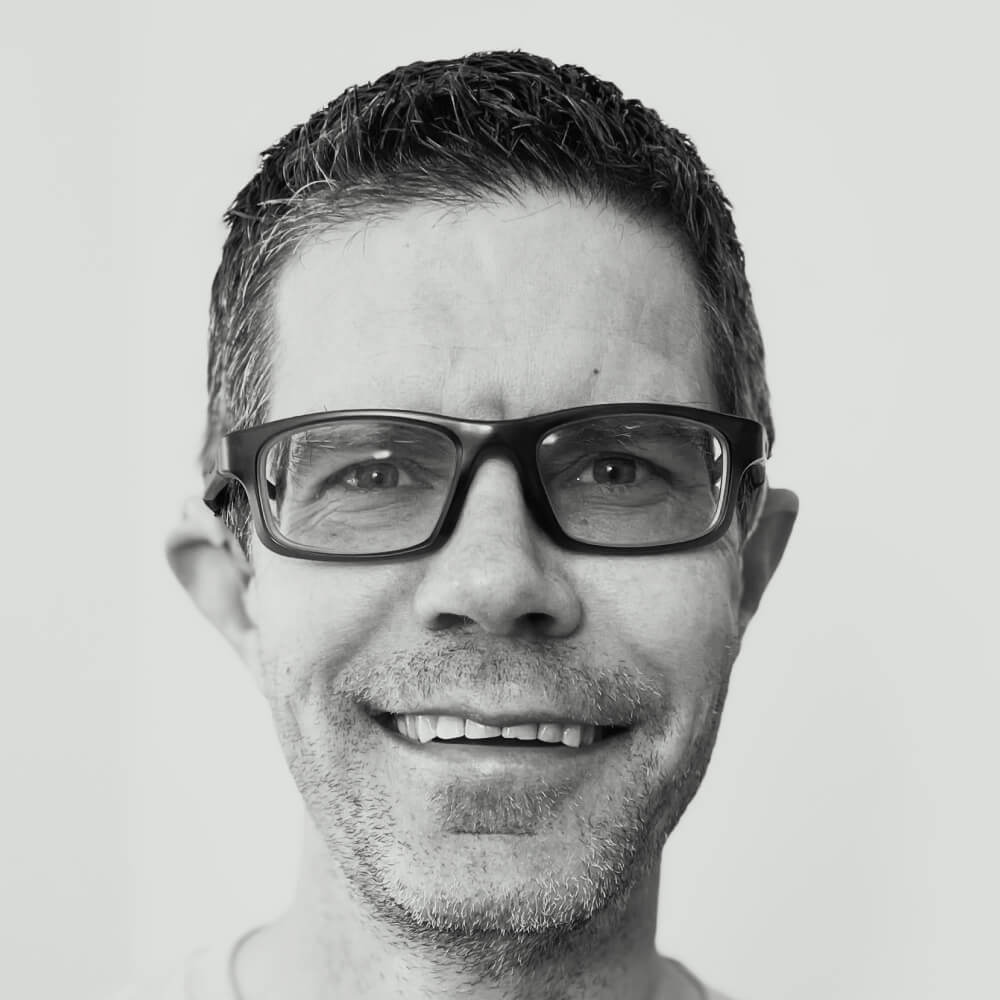If the recently concluded Critérium du Dauphiné is any guide, we can just hand Tadej Pogačar the 2024 Tour de France.
As Kit Nicholson wrote, the Dauphiné was a race where riders and fans were looking to answer questions: how well recovered were riders like Remco Evenepoel from that awful Itzulia crash? With Jonas Vingegaard still just training, who would rise as a Plan B for Visma-Lease a Bike? And so on.
The answers to those questions were, charitably, incomplete. Evenepoel smashed the time trial but faded in the final stages. Primož Roglič took the overall but had a shaky last day. Matteo Jorgenson confirmed he’s got the chops for one-week stage races with an aggressive, attacking ride, but he’s unproved as a Grand Tour contender, and teammate and fellow Plan B option Sepp Kuss continued his quiet spring with a DNS, due to illness, on the final day.
All of that suggests that, if Pogačar comes to Florence with anything close to his Giro d’Italia form, he could again dominate and take the first Giro-Tour double in a quarter century.
Before we go any further, let’s address the Vingegaard question by saying that I won’t address it. Everything that follows is speculation, of course, but it is at least speculation built on observation; with the two-time defending Tour champ, we don’t even have that. He’s cocooned at an altitude training camp and we have next to no visibility into how that’s going. No one – and maybe not even Visma at this point – knows for sure whether he’ll even start.
Anyway: Let’s assume for the sake of argument that Pogačar is still flying come the Tour. There’s little reason to suspect he won’t be; not including general classifications, the Slovenian has 12 wins in 31 race days so far this year and is the model of consistency in Grand Tours; in six entries he’s never finished lower than third. He has top-flight coaches and sports science support and will be backed by what is on paper the deepest team in the race.
And yet.
Evenepoel and Roglič both showed signs of improving form at the Dauphiné. Even after his strong time trial victory, Evenepoel sounded a note of caution about reading into his form. “I don’t think it speaks about my shape for a good overall result,” he said and, sure enough, when he fell off the pace on the final two mountain stages he addressed it with equanimity. “I can be content with the week I had,” he said. “I did a good effort and I continuously improved my form.”
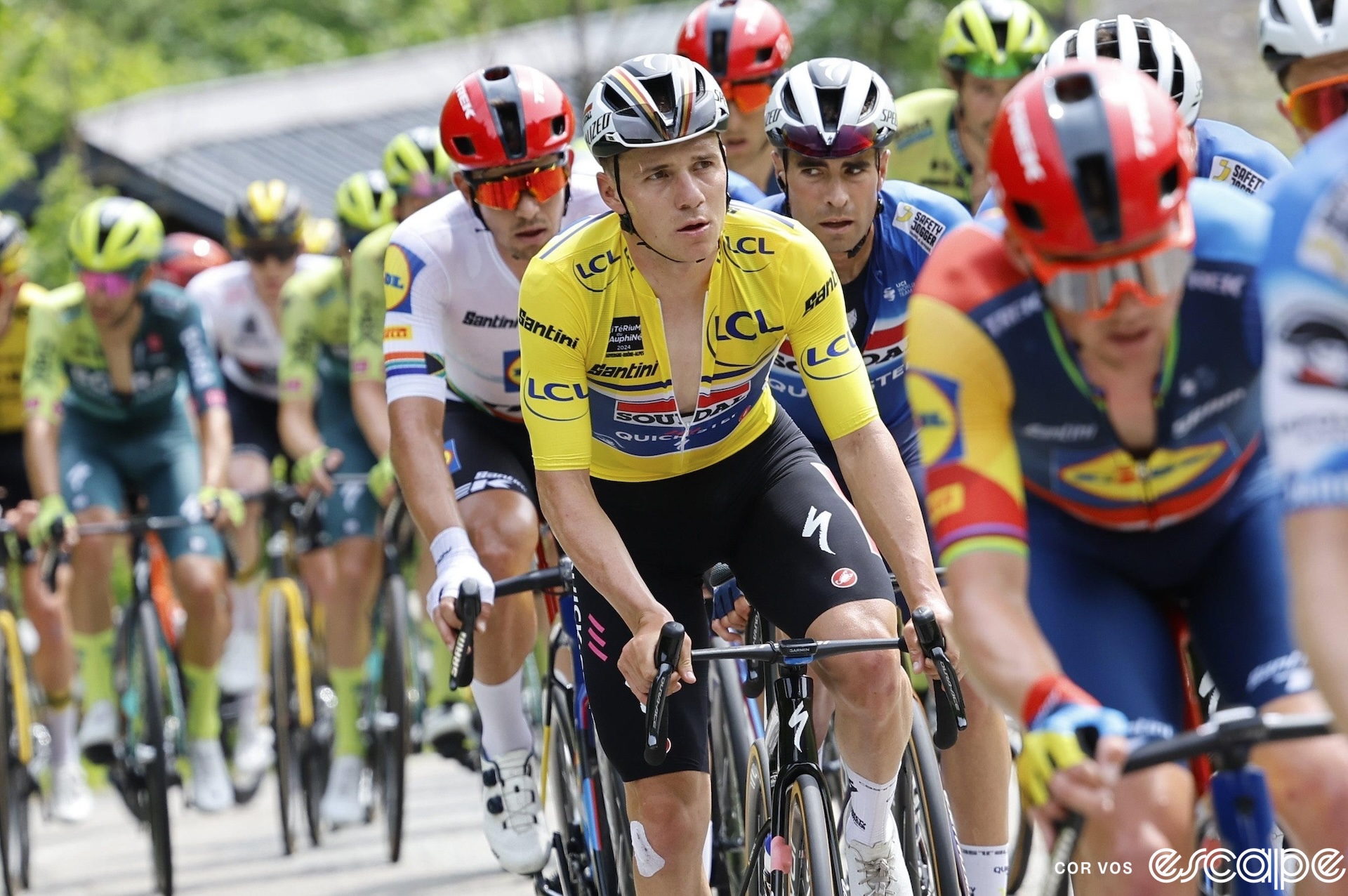
As for Roglič, because he wasn’t as badly injured in the Itzulia crash, and because his spring had been relatively quiet, with an uncharacteristic 10th at Paris-Nice his only other GC result, expectations were perhaps higher. But barring the final day when he shipped 48 seconds to Jorgenson and 33 to Derek Gee, it’s hard to look at the Dauphiné as anything other than a clear success: the overall, two stage wins, and a solid third in the TT.
Was it concerning that Jorgenson said after the final stage that Roglič had looked a bit on the limit in the early going?
Eh.
Remember all the way back at the 2023 Giro d’Italia, when none other than Geraint Thomas dropped Rog on the stage 16 summit finish on Monte Bondone? Tell me again what happened four days later.
Also remember that – thanks to the Itzulia crash and a decreased focus on the early spring calendar – Roglič came to the Dauphiné with just 11 race days so far in 2024 – four fewer than Vingegaard, who hasn’t raced since Itzulia. Roglič is also still adapting to a new team for the first time since 2016. The Dauphiné course this year was a thumper, finishing with three hard days with summit finishes, and Roglič won two, including the queen stage with its 4,300 meters of elevation gain. “I was suffering from the efforts of the last three days,” Roglič said after the final day. Not that he’d planned to get dropped with 5 km to go, but there was no panic when he did.
For my money, there are far more questions about Visma-Lease a Bike. But for Evenepoel, Roglič, and Vingegaard (if he starts), the key factor is simply whether they have enough time to reach top form. And the first week of the Tour gives them a bit of grace in that respect.
The opening stage will be a wallbanger; the Tour always is. With 3,800+ meters of climbing on Tuscany’s narrow and windy roads, stage 1 may feel much like last year’s Bilbaõ kickoff. Once through that, however, things calm down some. There are no summit finishes in the first nine stages; only stage 4, which features an early jump to altitude over the Col du Galibier, poses an obstacle. The Galibier is never easy, but they are climbing the easier south side.
The stage 7 time trial will see some time differences, but Evenepoel, in particular, will be on comfortable ground. The wildcard is stage 9, the “gravel” stage around Troyes. Pogačar called it “risky” after last year’s route unveiling, and that’s coming from a two-time winner of Strade Bianche. Meanwhile, Evenepoel has never been great on dirt. No surprise that he’s reconned it, but he reportedly rode gravel tires, something that won’t be an option on race day. Roglič, of course, has his own issues with novelty Tour stages.
But that’s really the exception, and the first week overall is a classic modern Tour course, which is to say it’s not the Giro d’Italia, or the Vuelta España. Those races delight in throwing early summit finishes at the peloton. The Tour typically warms up with a few spicy stages, but course setters want to keep the suspense high, and so the first week rarely includes the kind of knockout blow that decides the race.
There are exceptions, but generally by the first rest day the top 10 riders overall are separated by around two minutes. If – and it’s absolutely unknowable, of course – Roglič and Evenepoel get through those opening nine stages in relative striking distance of Pogačar, things will get a lot more interesting. The 2024 route is very backloaded, with four of the five summit finishes in the final eight stages, plus a second time trial on the final day.
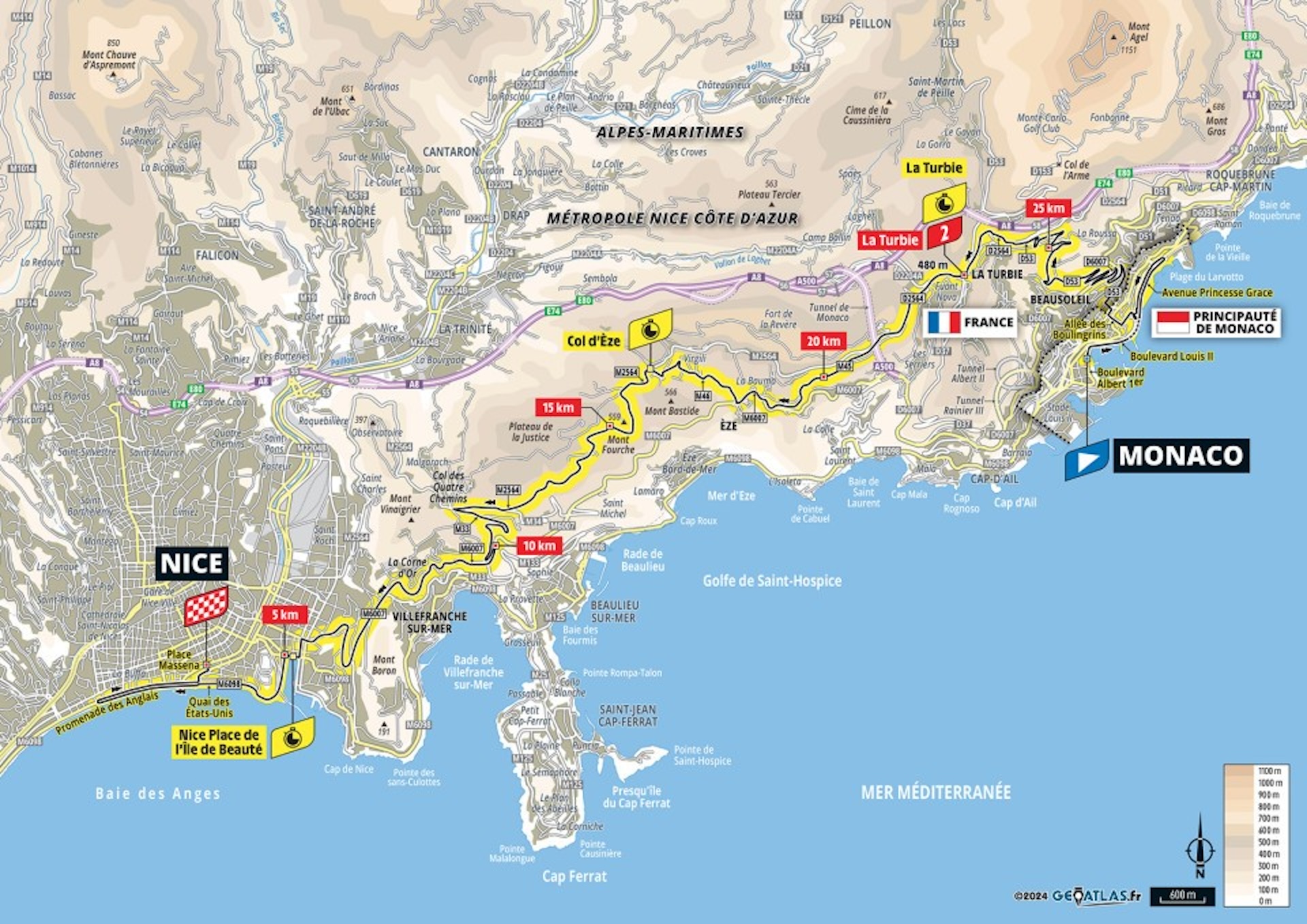
In the Giro and past Tours, Pogačar has ridden aggressively in the opening stages, twice to ultimate success and twice not. If he pursues the same tactic and fails to gain a major lead, will he be able to sustain that attacking style the entire three weeks against a more formidable field than the Giro? Where will Evenepoel – who has the weakest team on paper – choose to make his own moves? Will Roglič pursue his typical approach of nicking every time bonus possible to chip away at a lead?
The biggest wildcard of the 2024 Tour, however, may be its final stage, and I don’t just mean the novelty of finishing in Nice rather than on the Champs-Elysées, but rather that it’s the first time since the fated 1989 edition that the Tour has ended with a time trial.
Maybe the yellow jersey will be well-settled by that point. But if it’s close, watch out. The 34 km course is quite possibly the most technical in race history (certainly the trickiest since 2013’s stage 17), including more than 700 meters of climbing, many hairpins, and a descent of the Col d’Eze. As literally the last chance to make any move on GC, riders will have to balance aggression versus the risk of a catastrophic – certainly for their placing – crash.
It’s a great course for Tadej Pogačar. It’s also a great one for Primož Roglič and Remco Evenepoel.
Did we do a good job with this story?
